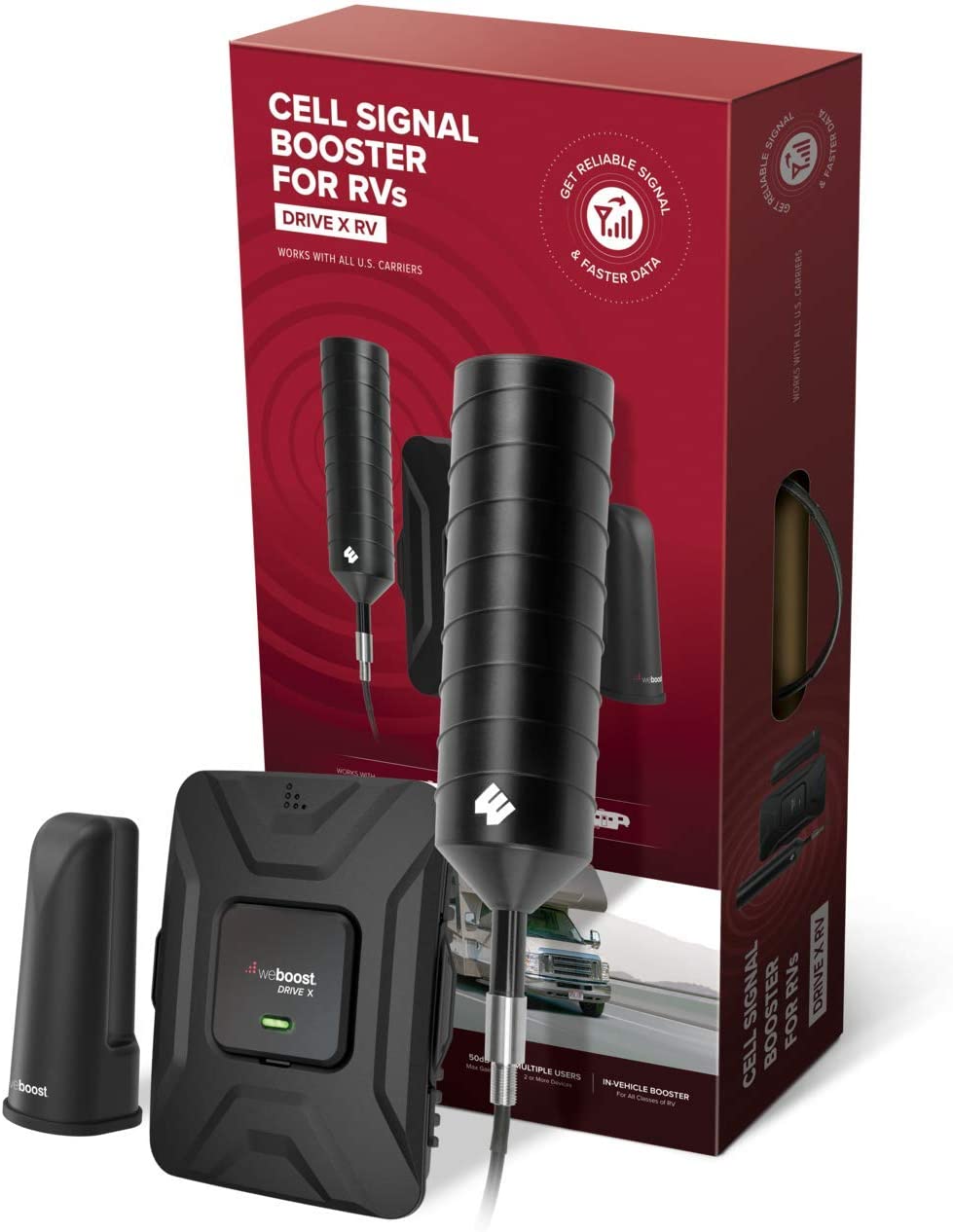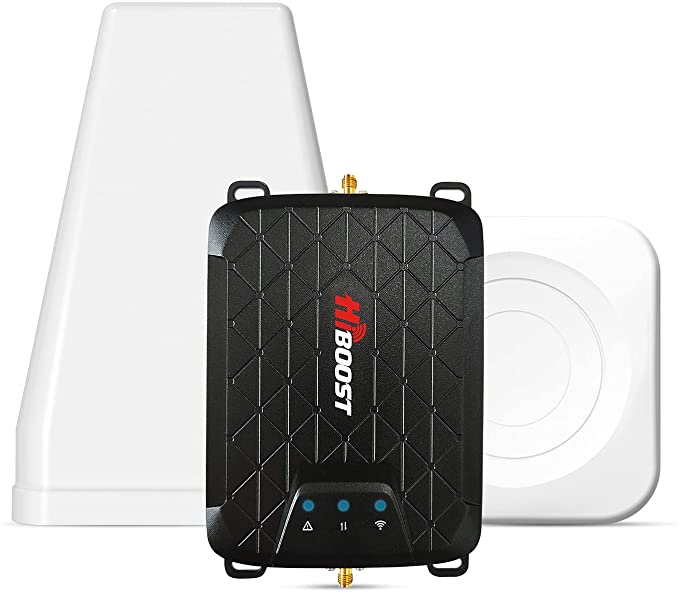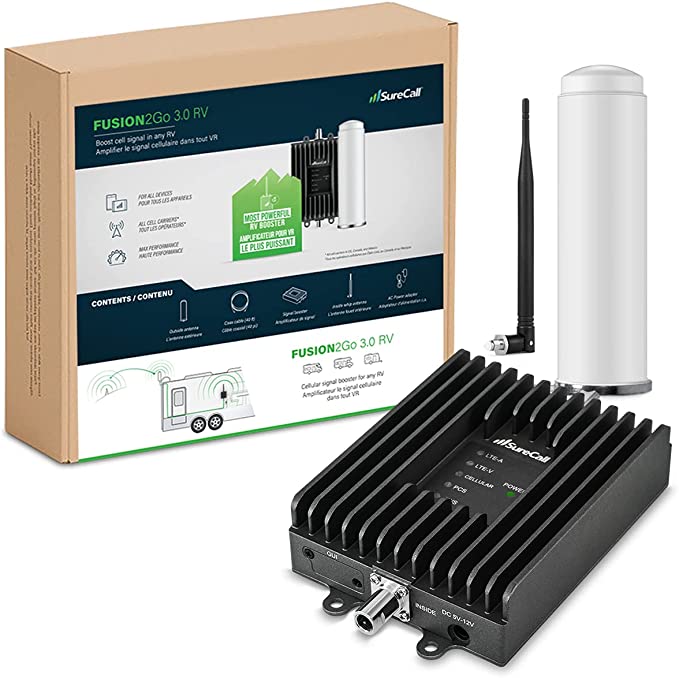weBoost Official All-Network RV Cell Phone Signal Booster
Last updated: July 5, 2023
Amplifying 3G and 4G LTE signals up to 50 dBm, this signal booster is also compatible with 5G. Plus, it has the power to support connectivity for multiple users in one place. This outdoor antenna offers easy, tool-free installation. The signal booster also boasts a long battery life and works both in stationary and mobile situations.
We looked at the top RV Cell Phone Boosters and dug through the reviews from some of the most popular review sites. Through this analysis, we've determined the best RV Cell Phone Booster you should buy.
Product Details
Key Takeaway: This RV cell phone booster has patented technology that detects nearby conditions and adjusts connectivity to give you the best signal.
In our analysis of 8 expert reviews, the weBoost Official All-Network RV Cell Phone Signal Booster
placed 2nd when we looked at the top 3 products in the category. For the full ranking,
see below.
From The Manufacturer
Explore the great outdoors and visit destinations across the U.S.—all without worrying about cellular connectivity with the weBoost’s Drive X RV cell signal booster. Designed for use with all RV classes—including Class A and Class C, and towable campers and travel trailers—weBoost has you covered no matter where your journey takes you. With 24.8 dBm uplink power, to 2.9 dBm downlink power, and up to 50 dB max gain and 33% farther range compared to the Drive Sleek booster, the Drive X RV gives multiple users coverage from all networks and carriers — even in remote areas or rural towns. Equipped with two power supply options, an AC/DC wall power supply and a hardwire power cord, for flexibility in installation of your cellular booster. All components you need to install the Drive X RV are included in one package with easy-to-follow instructions. Just in case you have any questions, our friendly U.S.-based customer service is here to support you.The weBoost Drive X RV will amplify cell signal from available bands 4, 5, 12/17, 13 and 2.
Expert Reviews
What reviewers liked
The system boosts both 3G and 4G LTE cellular signals up to 50 dBm and can support numerous users at once whether you’re parked at a campsite or cruising on the interstate. Using omni-directional antennas and a patented smart technology that senses signal conditions in and around your RV, the Drive X automatically optimizes and adjusts the booster’s output to provide rock-solid connectivity with only a 2 amp DC power draw. This results in fewer dropped calls, better voice quality, faster data speeds, enhanced streaming, and improved hotspot capability.
With the WeBoost Drive 4G-xRV installed, we were able to boost our cell phone mobile hotspot signal to full bars in that same boondocking spot in the desert. We were able to get work done, stream Netflix and listen to music with fewer interruptions.
The WeBoost boosts the signal very well when there is some signal to work with. So when you have just a few bars or when you have “slow internet” such as 3G, and you can still use your phone and hotspot, but things are just running at a snail’s pace. These scenarios are great to have the WeBoost, because it drastically changes our capabilities. We have gone barely being able to load a single web page to working efficiently on blog posts and research.
The 4G-X OTR kits had earned their place as our reference standard that we used to test all competing boosters against it.
Inside was a user manual that walks you through each step. I give weBoost high marks for the packaging and uncomplicated to follow DIY directions. The manual is easy to read with large text, and it contains diagrams illustrating each of 8 installation steps.
What reviewers didn't like
The interior antenna is a bit on the weak side for our liking.
We’re still a little ways away from doing major website edits and downloading large files in the middle of the desert.
One annoying thing we noticed the booster does is says it has full bars but it clearly doesn’t because you can’t get anything to load. This is usually at times when you have either no service or 1x. So we have learned to not even bother at times when we don’t have any signal on our phones.
Booster manufacturers may state their products are "5G ready." Which is a bit misleading. 5G is being deployed on a myriad of low, mid and high frequency bands. Current boosters only cover a handful of frequency bands in the low range spectrum (12, 13, 5, 4, 2 and sometimes 25). Where 5G is being deployed on those bands, they will work. But they will not work on the newer bands, thus only offering relatively limited 5G support.
Unfortunately, all the inside antennas had signal boost range limited to just a few feet. At 2 feet away the dBm increase dropped in half and by 5 feet away it was almost entirely gone.
From our partners



